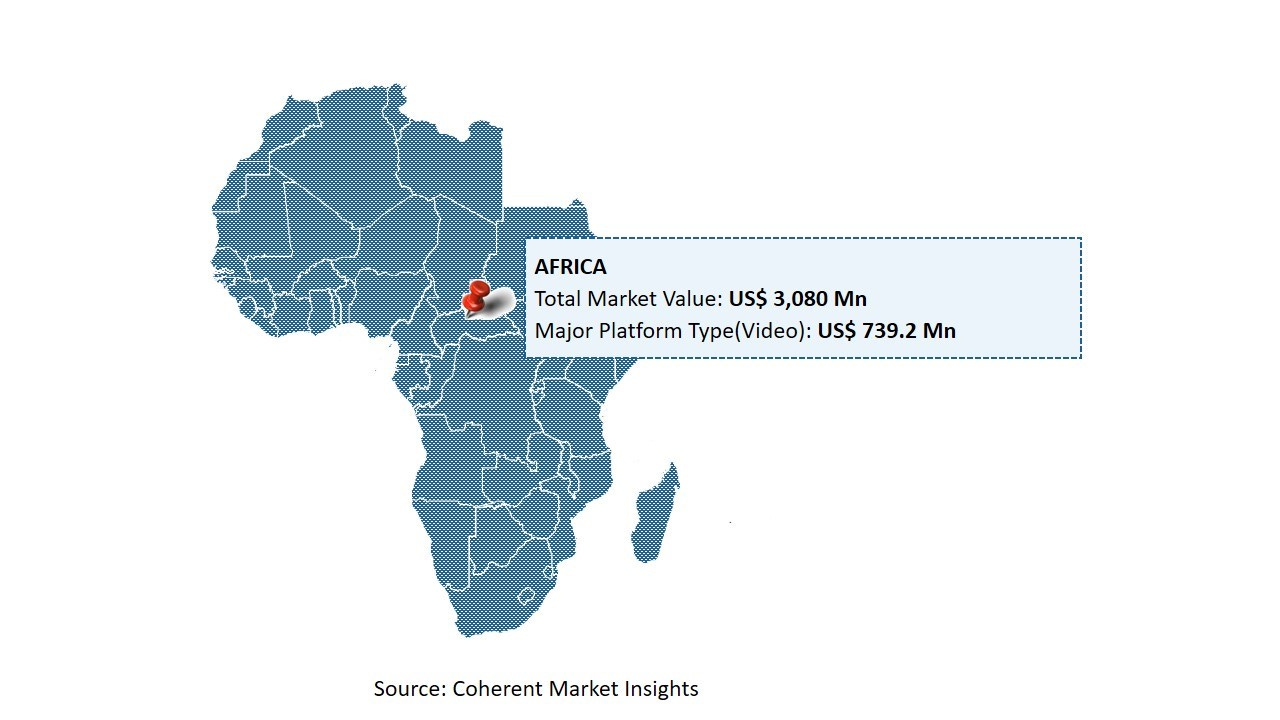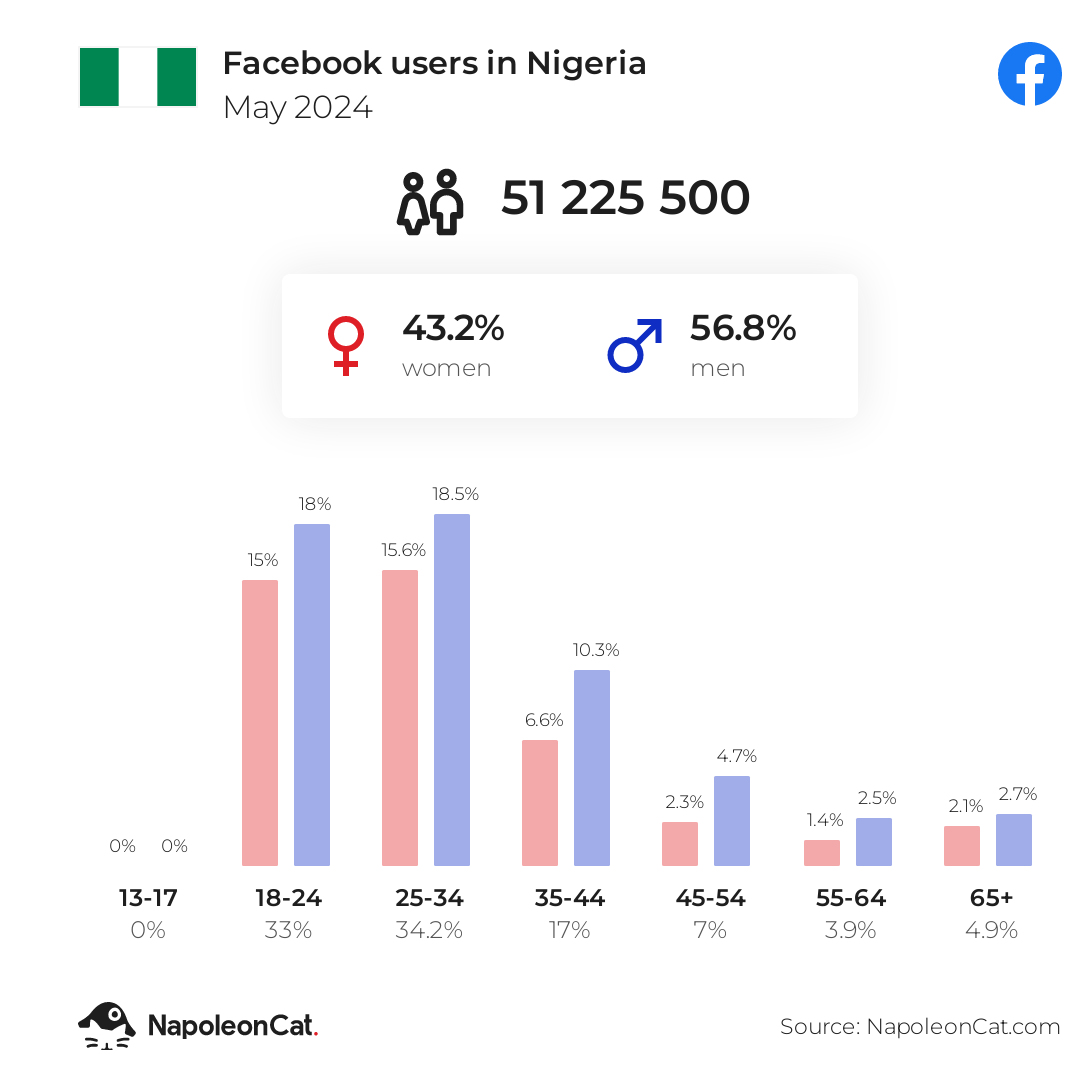
Quick Bite: Content Creators in Nigeria and Ghana are now eligible to earn money on Facebook and Instagram. With this new development, creators in these African countries can now monetise their content through Facebook in-stream ads, live ads, ads on reels, bonuses, and subscriptions, provided they meet the eligibility criteria.
This shift signals a paradigm shift for social networks, prioritising the creators of high-quality content as key players in attracting and retaining users.
Breakdown
Africa’s creator economy is booming, fueled by passionate individuals who churn out content across diverse niches.
In 2023, the African Creator Economy Market was valued at $3.08 billion and is expected to reach $17.84 billion by 2030 according to global market intelligence company, CoherentMI. These numbers can largely be attributed to the rising youth population, the increase in internet penetration on the continent, and the need for African youths to find alternatives to the scarcity of traditional employment.

This has led African youths to learn to use their creativity — comedy skits, fashion tutorials, educational explainers and artistic expressions — to create wealth and jobs using the Internet.
However, such efforts have often been met with stringent monetisation policies from popular social media platforms, such as Facebook and Instagram, restricting them from earning on these platforms.
Before Meta’s announcement, creators in Egypt and South Africa were the only ones allowed to monetise their Facebook audience. Creators with Nigerian, Ghanaian, and many other African country addresses were excluded from Facebook monetisation unless their page was managed from an eligible country. This new policy removes that barrier, opening new revenue streams for a large and talented pool of creators.
Sidebar: Kenyan content creators, promised access to monetisation on Meta platforms in March 2024 with a June launch target, now face a delay. The reason for the postponement remains unclear, though ongoing protests could be a contributing factor.
A look at the monetisation options
- In-stream ads: Short ads that appear before, during, or after your videos.
- Live ads: Earn money from ads displayed during your live streams.
- Ads on Reels: A performance-based system that pays creators based on the number of views their Reels receive
- Bonuses: Programs like Facebook Reels Play Bonus can offer creators additional income based on performance.
- Subscriptions: Allow fans to subscribe to your content for a monthly fee.
To qualify for certain monetisation tools like in-stream ads, your page must have at least 10,000 followers and 600,000 total minutes viewed in the last 60 days. Facebook also has other monetisation policies that you must comply with. Some of these include maintaining a high content standard, avoiding misleading information, and ensuring your page and content do not violate any of Facebook’s guidelines.
Audience Potential for African Creators

Per social media management SaaS tool and a Meta Business Partner, NapoleonCat:
As of May 2024, Nigeria, with a population of over 229 million, had 51,225,500 Facebook users, and 12,635,900 Instagram users, with people aged 25 to 34 accounting for the largest user group.
With a population of over 33 million, Ghana had 10,088,700 Facebook users and 2,313,700 Instagram users, with the largest user group being people aged 25 to 34.
While Kenya with a population of about 56 million, had 17,035,400 Facebook users and 3,224,000 Instagram users, with people aged 18 to 24 accounting for the largest user group.
Beyond Meta: Exploring Other Monetisation Options
Remember when social media was just a fun way to share pictures and catch up with friends? Platforms like Facebook and Instagram were all about connecting and sharing. Fast-forward to today and things have gotten a lot more competitive and exciting. Social networks are now in a battle for users and the best content. To attract and retain top talent, these platforms must offer financial incentives to creators.
Monetisation options are a strategic response to this competition. By giving creators a chance to earn money, social networks ensure a steady stream of engaging, high-quality content. YouTube was the trailblazer with its Partner Program, sharing ad revenue with creators. Others are catching on, realising that paying creators is key to keeping the digital party going.
YouTube
YouTube remains a staple for content creators. The Partner Program allows creators to launch channel memberships, providing exclusive content to subscribers for a fee, and get a share of that YouTube Ad money for both long-form and short-form content.
If you meet the criteria to join the YouTube Partner Program, you can put ads on your videos. To do that, you must follow specific YouTube monetisation policies, live in a relevant country, have over 4,000 valid public watch hours in the last 12 months, and have over 1,000 subscribers. YouTube takes 55% of the advertising revenue, and creators get to keep the remaining 45%.
TikTok
The TikTok Creator Fund offers creators a share of the pie based on views and engagement. However, for most African countries, it remains a dream waiting to be realised.
X (formerly Twitter)
X launched its “Ads Revenue Sharing” program last year, allowing creators to earn a share of ad revenue generated from ads displayed in replies to their tweets. To qualify for Twitter’s ad revenue sharing, the creator must be a verified member with a blue tick, a feature that requires Twitter users to pay $8 monthly.
Users have raised concerns about how the platform calculates the payout, calling for a more transparent process.
Snapchat
The platform uses its Spotlight program to reward up-and-coming creators with monthly prizes that can be exchanged for cash. To qualify for Spotlight rewards, your account must hit several criteria, including a minimum of 1,000 followers and over 1,000 views in the month you compete.
Unfortunately, Snapchat Spotlight is not available worldwide. Eligible countries in Africa include Algeria, Egypt, Libya, Morocco, and Nigeria.
The Effect of Governmental Policies on the African Creator Economy
In April, the Ghana Revenue Authority revealed that Ghana-based content creators and influencers who earn money on international platforms like YouTube, X, and TikTok would now be required to pay taxes. You would recall that in 2023, the Kenyan government attempted to enforce a 15% withholding tax on content creators in Kenya.
Recent news from Nigeria also indicates that the National Film and Video Censors Board would require content creators to seek approval before releasing content on social media platforms.
While challenges remain, the surge of monetisation options offered by social networks unlocks exciting earning potential for African creators. Previously restricted to brand deals and sponsorships, often demanding a massive following, creators can now tap into diverse revenue streams regardless of audience size. Despite these challenges, Meta’s decision presents undeniable opportunities. The ability to monetise content also directly addresses a major pain point for creators in these regions. Previously, their options were limited to brand deals and sponsorships, often requiring a large follower base.
